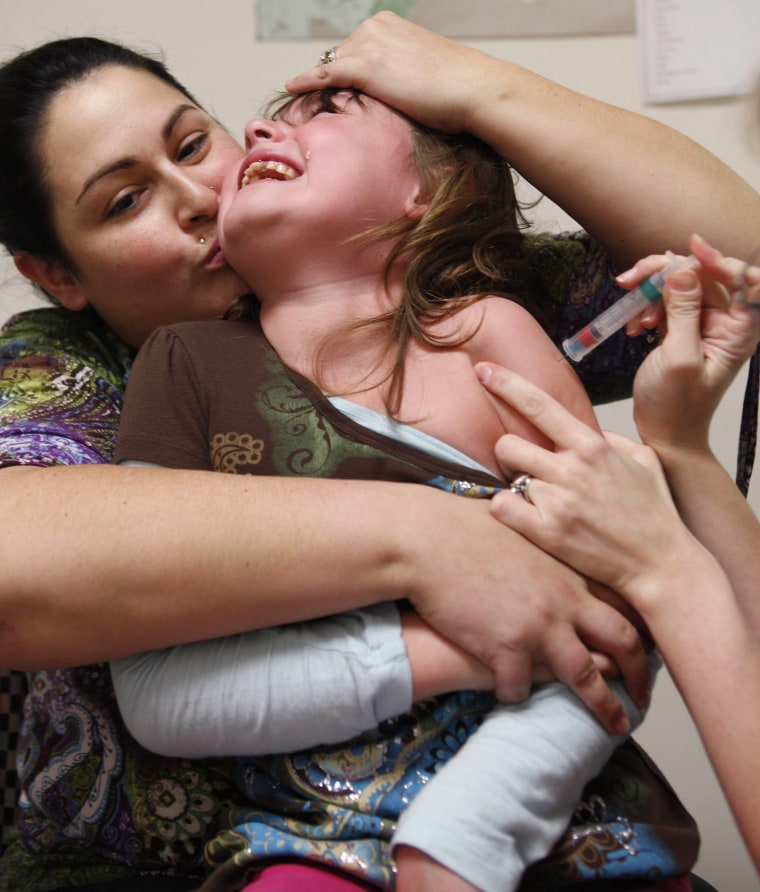A flu shot for the holidays?
Finally, the nation’s supply of swine flu vaccine will reach 100 million doses by week’s end, opening the way for everyone, not just those at highest risk, to get protected.
For people who’ve been at the back of the line, “Now it’s your turn,” Health and Human Services Secretary Kathleen Sebelius said Thursday.
Even though this new flu that scientists call the 2009 H1N1 strain is ebbing, specialists stressed that it’s too soon to say it’s over. There’s plenty of illness going around, and the 1957 flu pandemic ebbed in the fall only to bounce back in January and February.
“We have a wonderful window of opportunity to prevent or lessen a third wave,” Sebelius said.
She got her own shot Wednesday. Nearly half the states already had lifted restrictions on who can get vaccinated, and more will rapidly with the additional supplies, which have reached pharmacy chains in parts of the country.
The first wave of the swine flu pandemic began in April, when the strain was discovered. A larger wave started in the late summer. Through mid-November, about one in six Americans have caught this new H1N1, and about 10,000 have died, the Centers for Disease Control and Prevention estimates. Far more children and young adults have gotten seriously ill and died than in a normal flu year.
Despite severe vaccine shortages until now, a lot of high-risk people have gotten vaccinated, including many more pregnant women than in a typical year, health officials said Thursday.
In-school vaccine clinics inoculated so many schoolchildren that the CDC is considering pushing more school-based vaccinations every year. Thirty-four states held widespread in-school vaccinations, some inoculating more than half of their school populations, the CDC said. Rhode Island, for example, vaccinated three-quarters of its students.
“This is a very important legacy,” said Dr. Tom Frieden, the CDC’s director. Focusing on schoolchildren even in a regular flu year “may well tamp down the spread of flu in a community.”
The concern now is that people will lose interest in swine flu vaccine just as supplies finally are adequate that states are lifting restrictions. Even drugstore chains in parts of the country are starting to get enough supply to offer doses to anyone.
Historically, interest in flu vaccine plummets by the holidays, even though the regular winter flu usually revs up in January or February.
Will the swine flu crowd out regular winter flu this year? It seemed to in some parts of the Southern Hemisphere but not others, and it’s too early to know here, Frieden said.
The U.S. has ordered enough bulk vaccine to make 250 million doses, and may not need that much, although the government doesn’t want manufacturers to quit working.
“We’d rather have too much than too little,” said Nicole Lurie, assistant HHS secretary.
Some will go to developing countries, and depending on what happens later in the winter some may not be made. But some also could be reserved for next year.
Next year’s all-in-one flu vaccine probably will include protection against this H1N1 strain, Frieden said.
